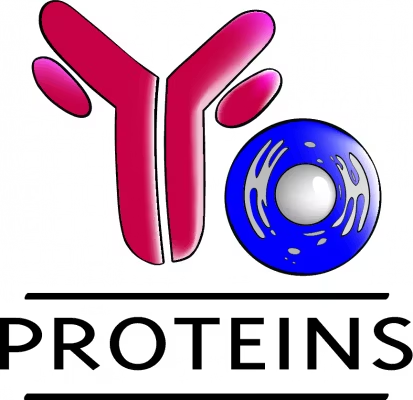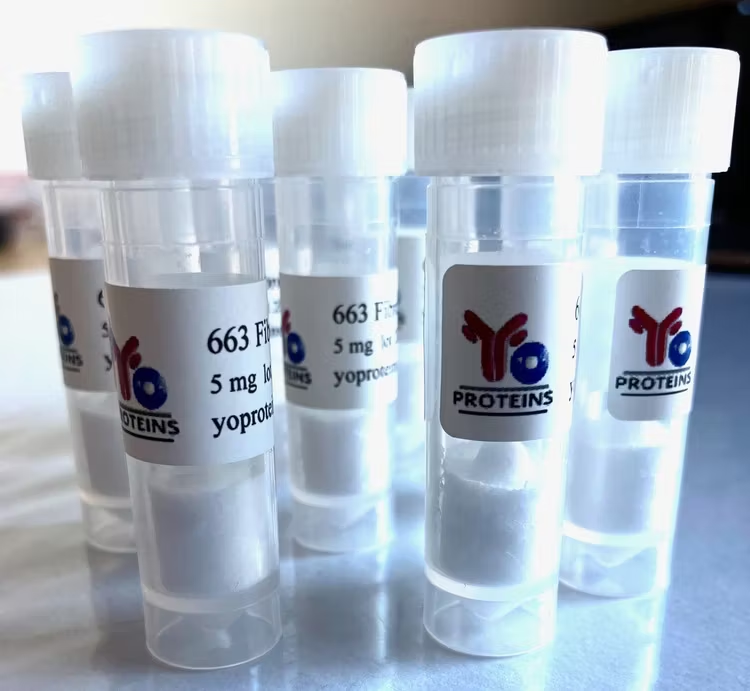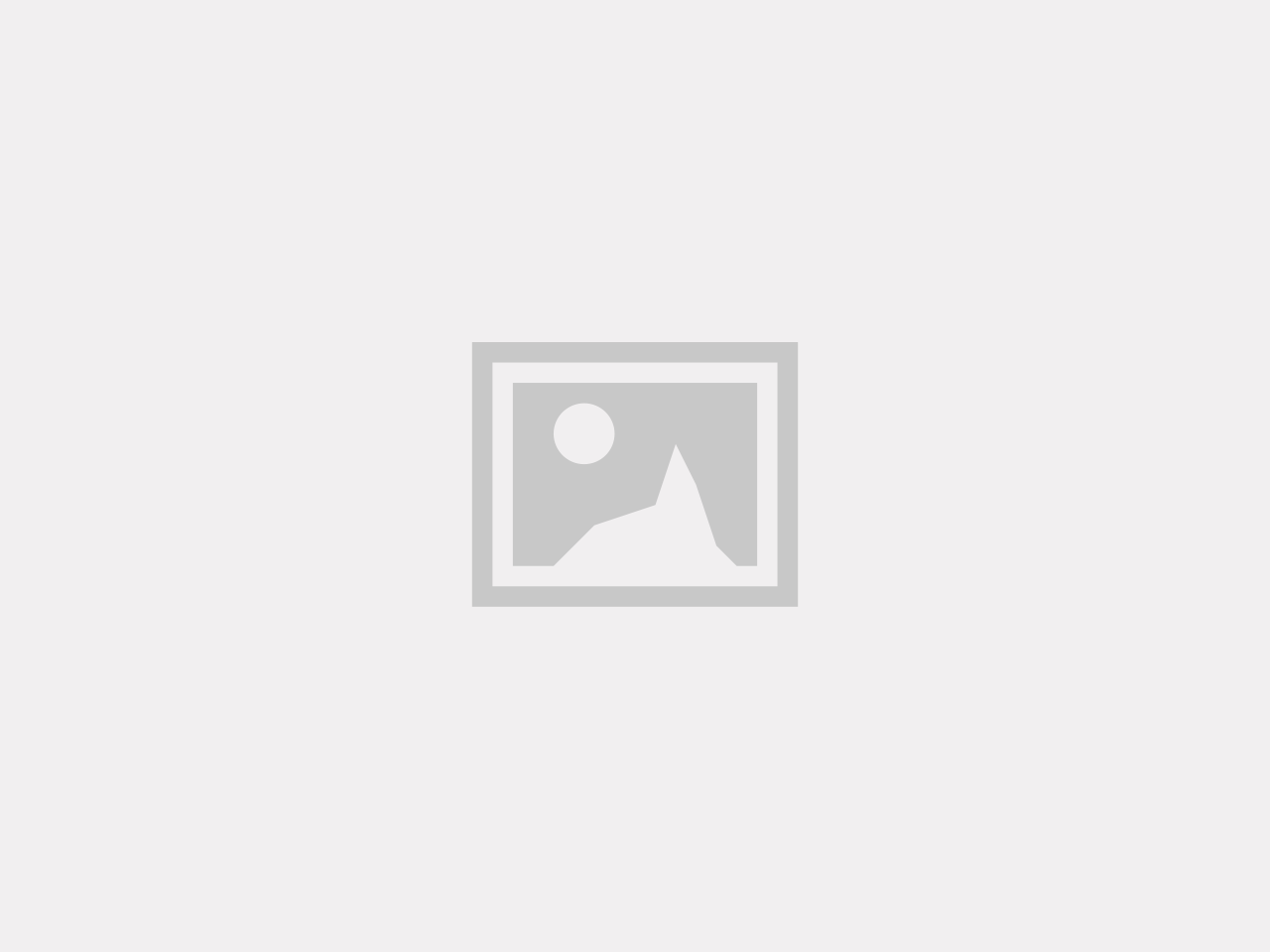663 Fibronectin (human) 5 mg
0 EUR
249 EUR
Fibronectin is a major protein found in human plasma that plays an important role in wound healing and embryonic development. The important property of fibronectin to mediate cell attachment is used in vitro to create more physiologically relevant surfaces for culturing cells. Addition of fibronectin is especially beneficial to promote cell attachment in serum-free media.
Fibronectin is a major protein found in human plasma and is purified by affinity chromatography. It is then lyophilized (from 2.5 ml of buffer (150 mM NaCl, 10 mM sodium phosphate pH 7.5) to ensure stability in storage and during shipping. Purity 95% (SDS-PAGE - double band 220 kDa)
Fibronectin is shipped at ambient temperature. Upon arrival store dry at -20°C or lower. Lyophilized product is moisture-sensitive. Reconstituted and sterile-filtered product can be stored for 1 month at +2...8°C
Reconstitution of lyophilized fibronectin is done with 5 ml of warm (37°C) PBS . Incubate at 37°C for 3 hours, occasionally inverting the vial. Do not vortex. Reconstituted solution contains 5 mg of soluble fibronectin and a minor quantity of insoluble fibronectin aggregate. Filter slowly through prewetted 0.2 um membrane filter. Concentration 1 mg/ml of fibronectin corresponds to A280 - 1.3
Amount 5 mg
Applications
Attachment of circulating angiogenic cell CACs (1)
Coating of polymer coverslips with fibronectin for attachment of HEK293.123 cells (2)
Attachment of pathogenic Escherichia coli and Salmonella through bacterial curli protein CsgA to fibronectin (3)
Adhesion of human dermal fibroblasts to fibronectin (4)
Fibronectin was used as a cell-adhesive factor on microstructured single-cell arrays of A549 and Huh7 cells (5)
Culture of human induced pluripotent stem cell-derived cardiomyocytes hiPSC-CMs on fibronectin-coated glass dishes (6)
Attachment and culture of MDCK cells on fibronectin-micropatterned surfaces (7)
Use of fibronectin for PAA gel cell culture of NIH-3T3 cells (8)
Cell adhesion for single-cell arrays of A549, HuH7, and MDA-MB-436 cell lines (9)
Cell adhesion protein for adhesion and growth of normal human dermal fibroblasts (NHDF) to create highly selective nanostructured surfaces (nanosphere lithography NSL) (10)
HUVEC cell culture (11)
Surface coating of a corneal implant made of collagen hydrogel to enhance the attachment and growth of human corneal epithelial cells, microcontact printing with fibronectin to promote cell adhesion and cell attachment, biointeractive scaffold to mimic the extracellular matrix (ECM) for regenerative medicine, lithographic patterning for cell attachment of corneal implants (12)
Cell culture on fibronectin-coated islands of pre-determined size and shape created by soft lithography on NHS-functionalized acrylamide (13)
Fibronectin was used for creating a pattern on substrate that was used for attachment and growth of induced pluripotent stem cell (iPSC)-derived cardiomyocytes (14)
Microcontact fibronectin printing on cytophobic polyacrylamide gels. Fibronectin forms a stable cell-adherent pattern for OS-HEK cell line (15)
Attachment of human dermal fibroblasts (16, 17)
Citations
1. Annelien C. de Kat, Hendrik Gremmels, Marianne C. Verhaar, Frank J. M. Broekmans, and Felicia Yarde, Early Vascular Damage in Young Women with DM-1 and Its Relation to Anti-Möllerian Hormone: A Cross-Sectional Study, International Journal of Endocrinology, vol. 2016, Article ID 1487051, 7 pages, 2016. doi:10.1155/2016/1487051 PMID: 27651793
2. Chatzopoulou EI, Roskopf CC, Sekhavati F, Braciak TA, Fenn NC, Hopfner K-P, Fuat S. Oduncu FS, Fey GH and Rädler JO (2016) Chip-based platform for dynamic analysis of NK cell cytolysis mediated by a triplebody. Analyst, 141, 2284-2295 PMID: 26958659
3. Oh YJ, Hubauer-Brenner M, Gruber HJ, Cui Y, Traxler L, Siligan C, Park S and Hinterdorfer P (2016) Curli mediate bacterial adhesion to fibronectin via tensile multiple bonds. Sci Rep. 6: 33909 PMID: 27652888
4. Niepel MS, Mano JF and Groth T (2016) Effect of Polyelectrolyte Multilayers Assembled on Ordered Nanostructures on Adhesion of Human Fibroblasts. ACS Appl. Mater. Interfaces, 8 (38), pp 25142-25151 PMID: 27603547
5. Ferizi M, Leonhardt C, Meggle C, Aneja MK, Rudolph C, Plank C, Rädler JO. Stability analysis of chemically modified mRNA using micropattern-based single-cell arrays. Lab Chip. 2015 Sep 7;15(17):3561-71. doi: 10.1039/c5lc00749f. Epub 2015 Jul 23. PubMed PMID: 26201602
6. Henderson MJ, Baldwin HA, Werley CA, Boccardo S, Whitaker LR, Yan X, Holt GT, Schreiter ER, Looger LL, Cohen AE, Kim DS, Harvey BK. A Low Affinity GCaMP3 Variant (GCaMPer) for Imaging the Endoplasmic Reticulum Calcium Store. PLoS One. 2015 Oct 9;10(10):e0139273. doi: 10.1371/journal.pone.0139273. eCollection 2015. PubMed PMID: 26451944; PubMed Central PMCID: PMC4599735
7. Segerer FJ, Thäroff F, Piera Alberola A, Frey E, Rädler JO. Emergence and Persistence of Collective Cell Migration on Small Circular Micropatterns. Phys Rev Lett. 2015 Jun 5;114(22):228102. Epub 2015 Jun 2. PubMed PMID: 26196648
8. Pinon P, Pärssinen J, Vazquez P, Bachmann M, Rahikainen R, Jacquier MC, Azizi L, Määttä JA, Bastmeyer M, Hytönen VP, Wehrle-Haller B. Talin-bound NPLY motif recruits integrin-signaling adapters to regulate cell spreading and mechanosensing. J Cell Biol. 2014 Apr 28;205(2):265-81 PMID: 24778313
9. Röttgermann PJF, Piera Alberola A and Rädler JO (2014) Cellular self-organization on micro-structured surfaces. Soft Matter 10, 2397 PMID: 24623049
10. Niepel MS, Fuhrmann B, Leipner HS, Groth T (2013) Nanoscaled Surface Patterns Influence Adhesion and Growth of Human Dermal Fibroblasts. Langmuir 13278-13290 PMID: 24090166
11. Sabourin D, Skafte-Pedersen P, Säe MJ, Hemmingsen M, Alberti M, Coman V, Petersen J, Emnéus J, Kutter JP, Snakenborg D, Jörgensen F, Clausen C, Holmström K, Dufva M. (2012) The MainSTREAM Component Platform: A Holistic Approach to Microfluidic System Design. J. Lab. Autom. Sep 26 PMID: 23015520
12. Mirazul Islam M, Cepla V, He C, Edin J, Rakickas T, Kobuch K, Ruöele, Jackson WB, Rafat M, Lohmann CP, Valiokas R, Griffith M. (2015) Functional fabrication of recombinant human collagen-phosphorylcholine hydrogels for regenerative medicine applications. Acta Biomaterialia. 12:70-80 PMID: 25448347
13. Werley CA, Chien M-P, Cohen AE. Ultrawidefield microscope for high-speed fluorescence imaging and targeted optogenetic stimulation. Biomedical Optics Express. 2017;8(12):5794-5813. doi:10.1364/BOE.8.005794 PMID: 29296505
14. Werley CA, Chien MP, Gaublomme J, Shekhar K, Butty V, Yi BA, Kralj JM, Bloxham W, Boyer LA, Regev A, Cohen AE (2017) Geometry-dependent functional changes in iPSC-derived cardiomyocytes probed by functional imaging and RNA sequencing. PLoS One. 2017 Mar 23;12(3):e0172671. doi: 10.1371/journal.pone.0172671. eCollection 2017. PMID: 28333933
15. McNamara HM, Zhang H, Werley CA, Cohen AE (2016) Optically Controlled Oscillators in an Engineered Bioelectric Tissue. Physical Review X, 6, 031001
16. Esmaeilzadeh P, Köwitsch A, Liedmann A, Menzel M, Fuhrmann B, Schmidt G, Klehm J, Groth T. (2018) Stimuli-Responsive Multilayers Based on Thiolated Polysaccharides That Affect Fibroblast Cell Adhesion. ACS Appl Mater Interfaces. 2018 Mar 14;10(10):8507-8518. doi: 10.1021/acsami.7b19022. Epub 2018 Feb 28 PMID: 29470914
17. Käwitsch A, Niepel MS, Michanetzis GPA, Missirlis YF, Groth T (2015) Effect of Immobilized Thiolated Glycosaminoglycans on Fibronectin Adsorption and Behavior of Fibroblasts. Macromolecular Bioscience 16:3:381-394 PMID: 26618787
18. Schreiber C, Segerer FJ, Wagner E, Roidl A, Rädler JO. Ring-Shaped Microlanes and Chemical Barriers as a Platform for Probing Single-Cell Migration. Sci Rep. 2016 May 31;6:26858. doi: 10.1038/srep26858. PubMed PMID: 27242099
19. Ekambaram BK, Niepel MS, Fuhrmann B, Schmidt G, Groth (2018) Introduction of Laser Interference Lithography to Make Nanopatterned Surfaces for Fundamental Studies on Stem Cell Response. ACS Biomater. Sci. Eng. DOI: 10.1021/acsbiomaterials.8b00060
20. Fröhlich F, Reiser A, Fink L, Woschee D, Ligon T, Theis FJ, Rädler JO and Hasenauer (2018) Multi-Experiment Nonlinear Mixed Effect Modeling of Single-Cell Translation Kinetics after Transfection. bioRxiv 285478; doi: https://doi.org/10.1101/285478 PMID: 30564456
21. Vozzi F, Logrand F, Cabiati M, Cicione C, Boffito M, Carmagnola I, Vitale N, Gori M, Brancaccio M, Del Ry S, Gastaldi D, Cattarinuzzi E, Vena P, Rainer A, Domenici C, Ciardelli G and Sartori S (2018) Biomimetic engineering of the cardiac tissue through processing, functionalization, and biological characterization of polyester urethanes. Biomedical Materials. 13:5 PMID: 29869614
22. McNamara HM, Dodson S, Huang Y-L, Miller EW, Sandstede B, Cohen AE (2018) Geometry-dependent arrhythmias in electrically excitable tissues. Cell Systems 7, 759-370 PMID: 30292705
23. Niepel MS, Ekambaram BK, Schmelzer CEH and Groth T (2019) Polyelectrolyte multilayers of poly (L-lysine) and hyaluronic acid on nanostructured surfaces affect stem cell response. Nanoscale 11, 2878-2891 PMID: 30688341
24. Reiser A, Woschee D, Mehrotra N, Krzyszton, Strey HH and Rädler JO (2019) Correlation of mRNA delivery timing and protein expression in lipid-based transfection. Integrative Biology, 2019, 11(9),362-371 PMID: 31850498
25. Haagdorens et al. In Vitro Cultivation of Limbal Epithelial Stem Cells on Surface-Modified Crosslinked Collagen Scaffolds. Stem Cells International Volume 2019, https://doi.org/10.1155/2019/7867613 PMID: 31065280















